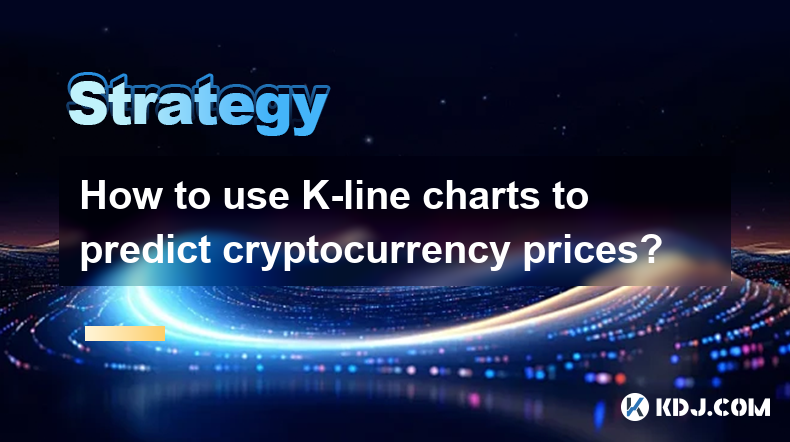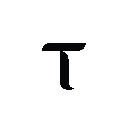-
 Bitcoin
Bitcoin $84,422.3862
-1.22% -
 Ethereum
Ethereum $1,579.4438
-1.72% -
 Tether USDt
Tether USDt $1.0000
0.00% -
 XRP
XRP $2.0539
-1.78% -
 BNB
BNB $589.6626
0.05% -
 Solana
Solana $137.3150
-1.67% -
 USDC
USDC $1.0000
0.00% -
 TRON
TRON $0.2451
0.93% -
 Dogecoin
Dogecoin $0.1543
-2.74% -
 Cardano
Cardano $0.6154
-1.90% -
 UNUS SED LEO
UNUS SED LEO $9.3292
0.64% -
 Chainlink
Chainlink $13.0166
1.86% -
 Avalanche
Avalanche $19.3938
-1.37% -
 Toncoin
Toncoin $2.9697
-0.37% -
 Stellar
Stellar $0.2415
-1.86% -
 Shiba Inu
Shiba Inu $0.0...01228
0.68% -
 Hedera
Hedera $0.1621
-2.21% -
 Sui
Sui $2.1055
-2.01% -
 Bitcoin Cash
Bitcoin Cash $334.5402
-0.94% -
 Polkadot
Polkadot $3.8448
3.11% -
 Hyperliquid
Hyperliquid $17.5557
-3.01% -
 Litecoin
Litecoin $76.0382
-0.15% -
 Dai
Dai $1.0000
0.00% -
 Bitget Token
Bitget Token $4.3529
-4.59% -
 Ethena USDe
Ethena USDe $0.9993
0.01% -
 Pi
Pi $0.6275
-3.58% -
 Monero
Monero $216.3249
1.59% -
 Uniswap
Uniswap $5.1978
-0.97% -
 Pepe
Pepe $0.0...07414
2.25% -
 Aptos
Aptos $5.0082
4.19%
How to use K-line charts to predict cryptocurrency prices?
K-line charts are crucial for crypto trading, showing price movements and trends; mastering candlestick patterns enhances predictive abilities.
Mar 28, 2025 at 08:43 pm

Understanding K-Line Charts in Cryptocurrency Trading
K-line charts, also known as candlestick charts, are a fundamental tool in technical analysis for cryptocurrencies. They visually represent price movements over a specific period, providing insights into market sentiment and potential price trends. Each candlestick represents the open, high, low, and closing prices of an asset within that timeframe (e.g., 1-minute, 1-hour, 1-day). Understanding how to interpret these elements is crucial for using K-line charts effectively. Mastering candlestick patterns is key to improving your predictive abilities.
Deciphering Candlestick Patterns
Individual candlesticks convey information about price action. A green (or white) candlestick indicates the closing price was higher than the opening price (bullish), while a red (or black) candlestick shows the closing price was lower than the opening price (bearish). The length of the candlestick body reflects the magnitude of the price change, and the wicks (shadows) show the high and low prices reached during that period. Analyzing the size and shape of these candles provides valuable clues.
Identifying Common Candlestick Patterns
Numerous candlestick patterns exist, each suggesting a potential future price movement. Some common patterns include:
- Doji: A candlestick with nearly equal opening and closing prices, suggesting indecision in the market. It often appears at turning points.
- Hammer: A candlestick with a long lower wick and a small body, suggesting a potential price reversal to the upside.
- Hanging Man: Similar to a hammer but inverted, suggesting a potential price reversal to the downside.
- Engulfing Pattern: A candlestick where the body of the second candle completely engulfs the body of the first, indicating a potential trend reversal. A bullish engulfing pattern occurs when a red candle is followed by a larger green candle, and a bearish engulfing pattern is the opposite.
- Shooting Star: A candlestick with a long upper wick and a small body, suggesting a potential price reversal to the downside.
- Inverted Hammer: Similar to a shooting star but inverted, suggesting a potential price reversal to the upside.
Using Support and Resistance Levels with K-Lines
Support levels represent price points where buying pressure is strong enough to prevent further price declines. Resistance levels are price points where selling pressure is strong enough to prevent further price increases. Identifying these levels on K-line charts is crucial for predicting potential price reversals. Breakouts above resistance or below support often signal significant price movements.
Integrating Moving Averages into K-Line Analysis
Moving averages (MAs) are calculated by averaging prices over a specific period. Commonly used MAs include simple moving averages (SMA) and exponential moving averages (EMA). Combining MAs with K-line charts can help confirm trends and identify potential buy or sell signals. For example, a price crossing above a long-term MA can be considered a bullish signal.
Volume Analysis in Conjunction with K-Lines
Trading volume provides crucial context for interpreting price movements. High volume during a price increase confirms the strength of the uptrend, while high volume during a price decrease confirms the strength of the downtrend. Low volume during price movements often suggests weak trends and potential reversals. Analyzing volume alongside K-line charts provides a more complete picture of market sentiment.
Timeframe Considerations
The timeframe chosen for your K-line chart significantly impacts your analysis. Short-term charts (e.g., 1-minute, 5-minute) are useful for identifying short-term trading opportunities, while long-term charts (e.g., daily, weekly) are better for identifying long-term trends. Using multiple timeframes simultaneously can provide a more comprehensive view of the market.
Risk Management and Emotional Control
Predicting cryptocurrency prices is inherently risky. No method guarantees success. Always implement proper risk management techniques, such as stop-loss orders, to protect your capital. Emotional control is also crucial; avoid making impulsive decisions based on short-term price fluctuations.
Combining K-Line Analysis with Other Indicators
While K-line charts provide valuable insights, combining them with other technical indicators can enhance your predictive capabilities. Indicators like Relative Strength Index (RSI), Moving Average Convergence Divergence (MACD), and Bollinger Bands can confirm trends and identify potential overbought or oversold conditions. Remember that no single indicator should be relied upon exclusively.
Backtesting and Practice
Before using K-line analysis for live trading, it's essential to backtest your strategies on historical data. This allows you to evaluate the effectiveness of your approach and refine your techniques. Consistent practice and continuous learning are crucial for improving your predictive abilities.
Frequently Asked Questions
Q: Can K-line charts accurately predict future cryptocurrency prices?
A: No, K-line charts are a tool for technical analysis, not a crystal ball. They provide insights into past price movements and potential future trends, but they cannot guarantee accurate predictions. Market conditions are dynamic and influenced by many unpredictable factors.
Q: What are the limitations of using K-line charts alone for price prediction?
A: K-line charts primarily focus on price action and volume. They don't account for fundamental factors (e.g., regulatory changes, technological advancements) that can significantly impact cryptocurrency prices. Using only K-lines ignores crucial macroeconomic and microeconomic factors.
Q: How can I improve my K-line chart interpretation skills?
A: Consistent practice, studying various candlestick patterns, and combining K-line analysis with other technical indicators are key to improvement. Backtesting your strategies on historical data is also crucial for refining your approach. Consider using educational resources and charting platforms to enhance your understanding.
Q: Are there any alternative methods for predicting cryptocurrency prices?
A: Yes, fundamental analysis, which considers factors like market capitalization, adoption rate, and technological advancements, is another approach. Sentiment analysis, which gauges market sentiment through social media and news, can also provide insights. However, remember that no single method offers foolproof predictions.
Q: What is the best timeframe to use for K-line analysis?
A: The optimal timeframe depends on your trading strategy and risk tolerance. Short-term timeframes are suitable for short-term trades, while longer timeframes are better for long-term investments. Many traders use multiple timeframes simultaneously for a comprehensive view.
Disclaimer:info@kdj.com
The information provided is not trading advice. kdj.com does not assume any responsibility for any investments made based on the information provided in this article. Cryptocurrencies are highly volatile and it is highly recommended that you invest with caution after thorough research!
If you believe that the content used on this website infringes your copyright, please contact us immediately (info@kdj.com) and we will delete it promptly.
- Uniswap Founder Warns Ethereum Could Lose DeFi Edge to Solana
- 2025-04-20 23:05:13
- Duefe Recommends Holding 1,000 XRP to Enjoy Financial Freedom by 2029
- 2025-04-20 23:05:13
- Argentina introduces a managed float of the peso amid IMF-backed reforms
- 2025-04-20 23:00:13
- Kiran Khawaja of Fajar Realty Wins Real Estate Fashionista Award at International Deluxe Beauty Awards
- 2025-04-20 23:00:13
- As Protests Against Donald Trump's Administration Erupt, Bitcoin Emerges as an Unlikely Ally for Activists
- 2025-04-20 22:55:13
- Shiba Inu (SHIB) Price Surge Sparks Optimism, But Math Reveals Its Ceiling
- 2025-04-20 22:55:13
Related knowledge

Is it a risk that SHIB's derivatives position is 3 times that of the spot?
Apr 20,2025 at 12:35am
Is it a risk that SHIB's derivatives position is 3 times that of the spot? The cryptocurrency market is known for its volatility and high-risk nature, and Shiba Inu (SHIB) is no exception. One of the metrics that traders and investors closely monitor is the ratio of derivatives to spot positions. SHIB's derivatives position being three times that of the...

What does SHIB's Cardano coefficient below 0.3 indicate?
Apr 19,2025 at 08:00am
What does SHIB's Cardano coefficient below 0.3 indicate? The Cardano coefficient, often used within the cryptocurrency community, is a metric that helps investors and analysts understand the correlation between different cryptocurrencies. When it comes to SHIB (Shiba Inu) and its Cardano coefficient falling below 0.3, this indicates a relatively low cor...

Is SHIB's TVL suddenly increasing by 20% a positive signal?
Apr 20,2025 at 08:07am
The sudden increase of SHIB's TVL (Total Value Locked) by 20% has sparked a lot of interest and speculation within the cryptocurrency community. TVL is an important metric that represents the total amount of assets locked in a DeFi protocol, indicating the level of user engagement and trust in the platform. In this article, we will explore whether this ...

Is the sudden decrease in liquidity of SHIB stablecoin pool dangerous?
Apr 20,2025 at 02:15pm
The sudden decrease in liquidity of the SHIB stablecoin pool has raised concerns among investors and market participants. Liquidity refers to the ability to buy or sell an asset without causing a significant price change, and a decrease in liquidity can have serious implications for the stability and functionality of a cryptocurrency ecosystem. In this ...

What to do when SHIB 1-hour level shows TD9 sequence?
Apr 20,2025 at 03:21pm
When the SHIB 1-hour level shows a TD9 sequence, it's important for traders to understand what this technical indicator means and how they can use it to inform their trading strategies. The TD9, or Tom DeMark Sequential, is a popular tool among traders for identifying potential reversals in price trends. In this article, we will explore what to do when ...

Is the golden cross of SHIB's EMA12 and EMA26 effective on the daily line?
Apr 19,2025 at 08:07pm
The golden cross of SHIB's EMA12 and EMA26 on the daily line is a topic of interest among cryptocurrency traders and investors. This technical indicator is often used to predict bullish trends in the market, but its effectiveness can vary depending on various factors. In this article, we will delve into the specifics of the golden cross for SHIB, its hi...

Is it a risk that SHIB's derivatives position is 3 times that of the spot?
Apr 20,2025 at 12:35am
Is it a risk that SHIB's derivatives position is 3 times that of the spot? The cryptocurrency market is known for its volatility and high-risk nature, and Shiba Inu (SHIB) is no exception. One of the metrics that traders and investors closely monitor is the ratio of derivatives to spot positions. SHIB's derivatives position being three times that of the...

What does SHIB's Cardano coefficient below 0.3 indicate?
Apr 19,2025 at 08:00am
What does SHIB's Cardano coefficient below 0.3 indicate? The Cardano coefficient, often used within the cryptocurrency community, is a metric that helps investors and analysts understand the correlation between different cryptocurrencies. When it comes to SHIB (Shiba Inu) and its Cardano coefficient falling below 0.3, this indicates a relatively low cor...

Is SHIB's TVL suddenly increasing by 20% a positive signal?
Apr 20,2025 at 08:07am
The sudden increase of SHIB's TVL (Total Value Locked) by 20% has sparked a lot of interest and speculation within the cryptocurrency community. TVL is an important metric that represents the total amount of assets locked in a DeFi protocol, indicating the level of user engagement and trust in the platform. In this article, we will explore whether this ...

Is the sudden decrease in liquidity of SHIB stablecoin pool dangerous?
Apr 20,2025 at 02:15pm
The sudden decrease in liquidity of the SHIB stablecoin pool has raised concerns among investors and market participants. Liquidity refers to the ability to buy or sell an asset without causing a significant price change, and a decrease in liquidity can have serious implications for the stability and functionality of a cryptocurrency ecosystem. In this ...

What to do when SHIB 1-hour level shows TD9 sequence?
Apr 20,2025 at 03:21pm
When the SHIB 1-hour level shows a TD9 sequence, it's important for traders to understand what this technical indicator means and how they can use it to inform their trading strategies. The TD9, or Tom DeMark Sequential, is a popular tool among traders for identifying potential reversals in price trends. In this article, we will explore what to do when ...

Is the golden cross of SHIB's EMA12 and EMA26 effective on the daily line?
Apr 19,2025 at 08:07pm
The golden cross of SHIB's EMA12 and EMA26 on the daily line is a topic of interest among cryptocurrency traders and investors. This technical indicator is often used to predict bullish trends in the market, but its effectiveness can vary depending on various factors. In this article, we will delve into the specifics of the golden cross for SHIB, its hi...
See all articles























































































